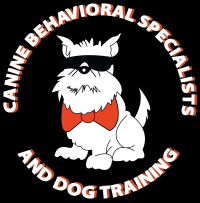
Is your dog hurting?
When people are in pain, it’s pretty hard to miss it. We complain about our aching back. We yell out because we’ve stepped on something pointy. We limp because it hurts to put pressure on a leg. We lay down in the middle of the day in complete silence and darkness because we have a migraine.
Dogs, unfortunately, aren’t always quite so easy to read. They can’t tell us if something hurts, at least not with language. And while canine behavior such as limping or whining is a sure sign of a dog in pain, symptoms aren’t always so clear — especially if your dog is of the “walk it off” type.
There is more subtle canine behavior you can watch for if you’re worried your pooch might be hurting more than she’s letting on.
Common Canine Behavior to Signal Pain:
Excessive vocalizations
Even if they’re trying to be tough, dogs in pain tend to be more vocal, but unless this is paired with a specific physical action, it’s not always easy to spot immediately. A hurt dog may express this vocally in a number of ways: whining, whimpering, yelping, growling, snarling, and even howling. If he’s vocalizing more than normal, see what’s up.
Constant localized grooming
When dogs are hurt, one of their first instincts is to clean and care for the wound by licking it. This canine behavior is obvious if it’s a visible wound like a cut, but even when the pain is internal, dogs will lick that area in an attempt to fix the problem.
Differences in sleeping, drinking, and eating
Many dogs will sleep more when in pain because they’re trying to heal or because it’s too hard to move around. In this vein, a loss of appetite and changes in the way and amount they drink are common.
If your dog is hurting, it can make it difficult to sit or lie down. Because of this, you should check them if you notice they are sitting or lying in an unusual position or seem to have trouble staying put. For example, they might keep trying to sit or lie down and almost immediately get up and move around again.
Altered breathing
Is your dog panting even though she hasn’t been exercising? Do her breaths seem faster or shallower? These things can be signs that it hurts her to take a breath, or that she is having internal pain.
Changes to the eyes
Dogs with eye pain frequently squint and may also lick their paws to rub their eyes. Additionally, you might notice that his pupils are smaller. For pain in other parts of the body, the opposite is true — the pupils get bigger.
Changes in behavior
Some dogs, when they aren’t feeling well, try to keep away from you and may even hide. Others will be all over you, seeking affection constantly. If your dog has personality changes, this is a canine behavior that is pointing to pain.
Some dogs go into protection mode and try to get you to stay away because they’re worried you’ll hurt them. This may mean that your normally docile dog suddenly starts growling, pinning his ears back, and even biting if you do something that worries him. Typically aggressive dogs sometimes show the opposite behavior.
See a vet for a true diagnosis
Obviously, most of these symptoms can mean several different things, so you don’t just want to assume your dog is in pain. As long as your dog isn’t acting aggressively, one thing you can do to check is to poke and prod (gently but firmly) around their body — just like your vet does. This can help you to localize the source of the pain, but be careful — otherwise docile dogs will sometimes bite when hurt if you touch a sore spot.
If you find something that seems worrisome or the odd behavior continues, see a vet immediately to diagnose the problem.
For canine behavior issues that can be addressed through dog training contact Jill, canine behaviorist at dogtrn07 at msn dot com or find her on Facebook.
